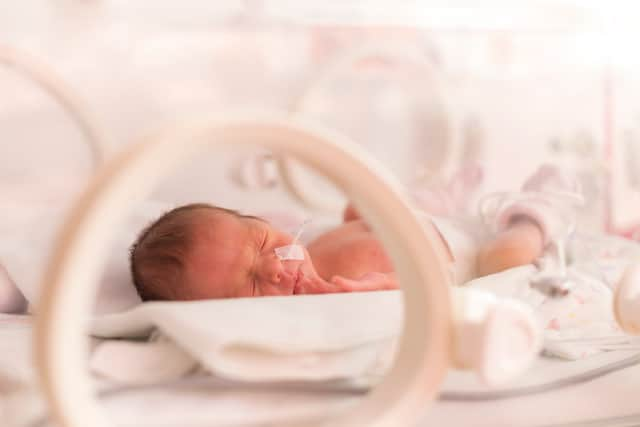Baby born using DNA from three people in UK first after special IVF procedure
and live on Freeview channel 276
A baby has been born using DNA from three people for the first time in the UK, the fertility regulator has confirmed.
The special IVF procedure aims to prevent children from being born with inherited diseases by using a technique known as mitochondrial donation treatment (MDT).
Advertisement
Hide AdAdvertisement
Hide AdThe procedure is intended to avoid women passing on defective genes in the mitochondria - tiny rod-like power plants in cells which supply energy - to the child.


Mitochondrial diseases are caused when the mitochondria in the cells are not producing enough energy, and the severity of the symptoms depends on how many cells are affected and where they are in the body.
The parts of the body that demand the highest amount of energy, such as the brain, muscle, heart, liver and kidneys, are the areas that are most commonly affected.
At the moment, mitochondrial diseases are incurable and can prove fatal in some cases. They are passed down to the child only by the mother, so MDT uses mitochondria from a healthy donor egg to try and prevent such diseases from being inherited.
Advertisement
Hide AdAdvertisement
Hide AdThe procedure involves giving a woman an IVF baby with DNA from three individuals. The baby will have nuclear DNA from its mother and father which define key characteristics, such as personality and eye colour. But in addition, the baby will also have a tiny amount of mitochondrial DNA which is provided by the “third parent”.
Less than five babies have been born in the UK after MDT as of 20 April this year, the Human Fertilisation and Embryology Authority (HFEA) confirmed.
HFEA did not give further details to avoid families being identified, the Guardian reports after receiving the information from a freedom of information request.
Peter Thompson, chief executive at the HFEA, told the paper: “MDT offers families with severe inherited mitochondrial illness the possibility of a healthy child.
Advertisement
Hide AdAdvertisement
Hide Ad“The UK was the first country in the world to allow MDT within a regulatory environment … These are still early days for MDT and the HFEA continues to review clinical and scientific developments.”
Britain became the first country in the world to formally allow MRT when the HFEA gave a cautious green light to the procedure in 2017.
A year later, fertility doctors at the Newcastle Fertility Centre at Life were given permission by HFEA to give two women MRT.
It comes after MPs and peers paved the way for the change in 2015 by voting to alter the Human Fertilisation and Embryology Act which sets the legal framework for fertility research and treatment.
Comment Guidelines
National World encourages reader discussion on our stories. User feedback, insights and back-and-forth exchanges add a rich layer of context to reporting. Please review our Community Guidelines before commenting.
